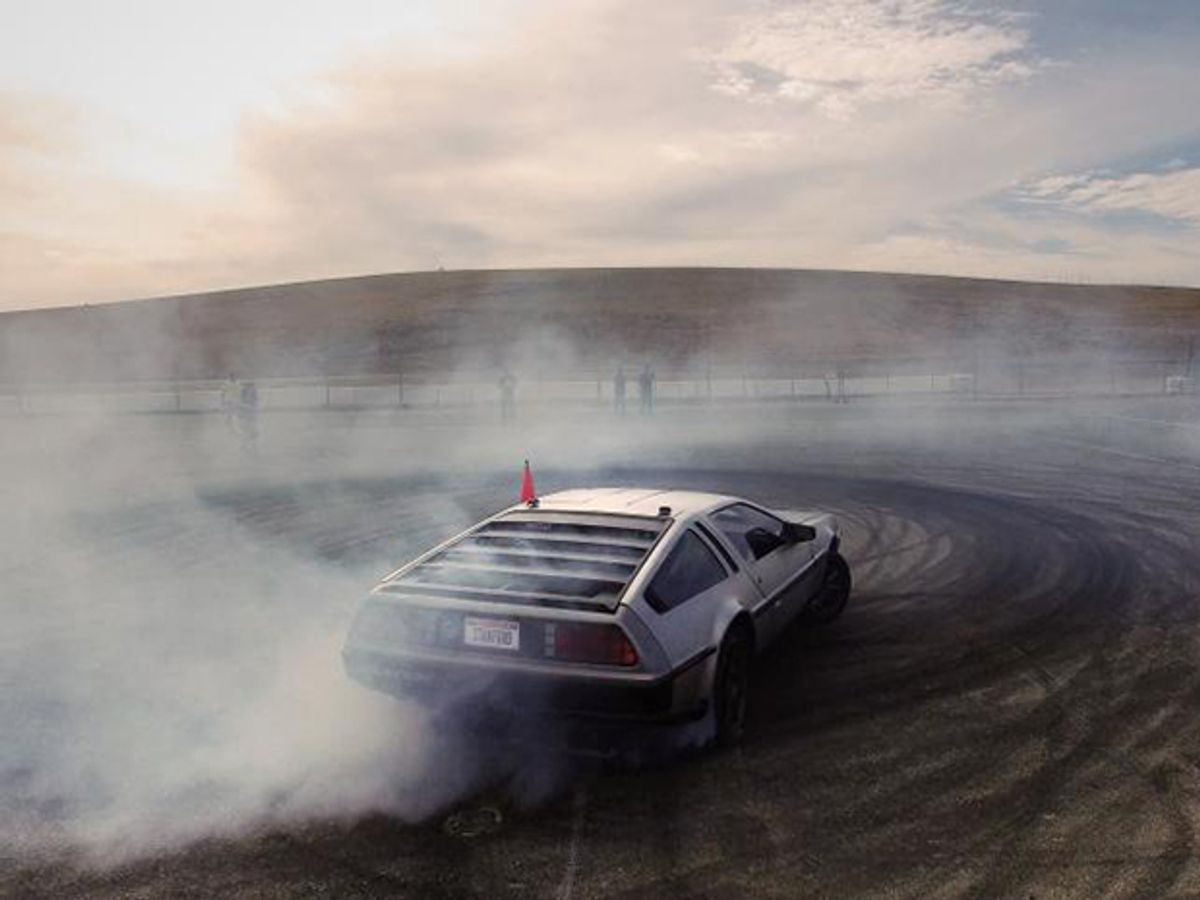By now, you have (probably) survived Back to the Future Day: October 21, 2015, the day that Doc Brown and Marty McFly traveled to from 1985 in the movie “Back to the Future.” The best thing about that movie, besides the working hoverboards, is Doc's DeLorean DMC-12, a rear mid-engine, rear-wheel drive with an integrated flux capacitor.
To study how cars perform in extreme situations, Stanford University needed a rear mid-engine, rear-wheel drive research platform, and the obvious best choice was to customize and electrify a DeLorean. They haven't yet taught their car to travel through time, but they have taught it to autonomously drift, with the goal of giving future vehicles the ability to use creative acrobatics to avoid accidents.
Drifting, if you've never done it on purpose, is a driving technique where a combination of acceleration and oversteering of a rear-wheel drive car causes the back wheels to lose traction, resulting in the back of the car "drifting" sideways. If done correctly, cars can be drifted through much sharper turns than would otherwise be possible, or driven in tight circles at relatively high speeds. This probably isn't something that your daily commute usually involves, but it could be a valuable skill for driving on slick surfaces or where you might need to make a high speed turn to avoid running into someone. It's obviously not realistic to expect most drivers to learn how to do this, but it may be possible to teach cars to do it by themselves, in order to keep you safe.
At Stanford, they've been working on autonomous drifting since 2008, using a test vehicle that was later upgraded to an Audi TTS:
The researchers found that they weren't able to control or communicate with the motors quickly or robustly enough to do everything that they wanted to do, so the obvious solution was to upgrade to a car that hasn't been produced since 1983. With the assistance of Renovo Motors (an automotive startup specializing in advanced electric vehicle tech), the DeLorean was disemboweled and then upgraded Doc Brown style with an electric drive system that delivers 4,000 pound-feet of torque to each of the rear wheels from on-motor gearboxes in a fraction of a second. Here's the stainless-steel clad result:
The car is called MARTY, which is most of an acronym for Multiple Actuator Research Test bed for Yaw control. Driving in circles might not look very practical at the moment, but the idea is to teach the car to recognize the physical limits of autonomous driving, and to drive beyond stability, all the way up to those limits when necessary. The ultimate goal is to create an autonomous car that, while maybe not as talented as a professional racecar driver, is far more talented than you are, able to perform controlled maneuvers that you might otherwise call crazy and dangerous to avoid accidents.
Drifting is just the beginning of autonomy for vehicle safety, but Stanford has more fun stuff in the works for this car. They're currently only using about a third of the maximum of 600 kilowatts of power that motors each of the motor is capable of delivering, so there's all kinds of potential there. Eventually, Stanford would like to see MARTY drift alongside a car professionally driven by a human, and we're looking forward to the day when all of our cars come equipped with a button that we can push to be autonomously drifted into the tightest of parking spots.
Evan Ackerman is a senior editor at IEEE Spectrum. Since 2007, he has written over 6,000 articles on robotics and technology. He has a degree in Martian geology and is excellent at playing bagpipes.



